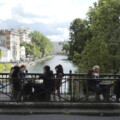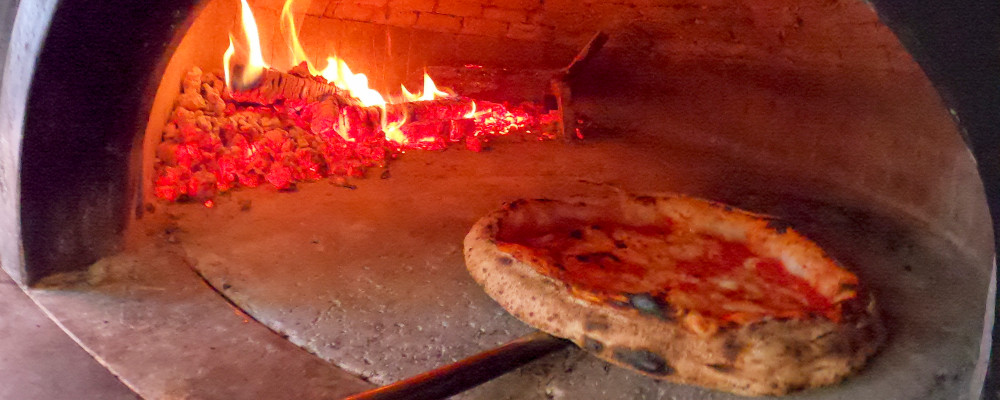Early in my career as a food and wine writer, I interviewed the Italian newspaper columnist Beppe Severgnini. Severgnini was promoting his new book, La Bella Figura: A Field Guide to the Italian Mind (2005). The interview was set up on the suggestion of the restaurateur and informal ambassador to all things Italian, Roberto Martella, who had hosted a dinner for Severgnini at his very much missed Grano restaurant in mid-town Toronto.
Cramming for the interview, I devoured the book in one or two sittings. I had been to Italy a few times and considered myself a budding Italophile, but Severgnini’s book explained to me a lot of things I had observed without really understanding. The conversation that made up the interview made a great impression on me and I can remember two parts of it vividly.
The first thing I remember was the answer Severgnini gave to a question that was wine related. Is it true, I wanted to know, that Italians only ever drink alcohol when they are sitting at the table? “Yes, it’s mostly true,” he replied with a smile, adding, “But then that’s why we invented the five-hour lunch!”
The other topic I remember from that afternoon meeting nearly 20 years ago was the matter of pizza. People outside of Italy weren’t (aren’t) eating it properly. Pizza was a sit-down dinner meal, not for lunch. And the correct pairing for pizza, in Italy, wasn’t wine it was beer.
This information hurt. It still does. Pizza is one of my favourite weekend lunch meals, and as much as I like a beer, I like a crisp white wine with my midday pie. Wine with pizza refreshes the palate after an onslaught of dough and cheese. Was I really doing it all wrong?
Like so many wine and food questions, the answer is a bit yes, a bit no, and a bit it really doesn’t matter. Drink whatever you like with your pizza. Here are some ideas about some who might choose one thing or another.
The Risorgimento politician, Massimo d’Azeglio, wrote in his memoirs, on the subject of Italy’s 19th-century unification: “We have made Italy, now we must make Italians.” In my experience, he is quoted a lot by his later-day compatriots who acknowledge that most Italian identity is still very regional.
Severgnini is a Northerner, from Milan. Northern Italy has its own culinary traditions and its own starches like risotto from rice and polenta from corn. Pizza is from Naples in the South, where the starch is hard wheat. Pizza in the modern age would have come up with Southerners looking for work in the Northern factories in the last century.
Much of Northern Italy was, until the Risorgimento, dominated by Austria and open to Germanic influence from across the Alps. Beer would be plentiful and make a good pairing with an inexpensive and casual meal when pizza came up to the Po Valley.
On reflection, the pizza I have eaten in Northern Italy has tended to be at more casual pizzeria than fancy. Mind you several of those times were at lunch, so having a beer, especially between wine tastings made sense.
I had dinner at a pizzeria in Turin last fall. I was by myself and just arrived after a long night and day’s travel from Canada. It was a weeknight and most of the tables looked like they were families from the neighbourhood, which was a little bit outside of the historical centre.
Some of the patrons drank beer, some soft drinks, and some drank wine from the carafe. I had nameless, vintageless Arneis from a carafe with a pizza that had some kind of salumi on it. It worked and I can remember the happiness that simple meal gave my jet-lagged body before I headed to my hotel to crash.

Most of my lunchtime pizza meals are at a local branch of the Toronto mini restaurant chain, Terroni. Terroni means roughly ‘people of the earth’, or maybe, less charitably, just ‘dirt’. What was a put down of Southern Italians by their Northern cousins has become a point of pride for the Mammoliti family who run Terroni successfully, and who have roots in Puglia, Italy’s boot heel.
There is beer at Terroni, but there’s also a lot of very good wine, from all over Italy. I used to order by the glass, but I have started ordering a bottle of lunch because, since the loosening of liquor laws during the pandemic, they’ll recork the bottle and let you take what you don’t drink home. This is what I did with a delicious Coda di Volpe white.
Coda di Volpe means fox’s tail, which refers to the bushy shape of its clusters of grapes. It’s grown and made in the hills of Campania around Naples. When I was in Naples last spring with some friends and family, we defied Severgnini and ate pasta at lunch and pizza at dinner… with wine… but red because it was the evening.
Naples is the home of pizza because Naples is where tomato growing got serious in the 19th century. San Marzano is basically at the foot of Mount Vesuvius, and its volcanic soils impart, locals say, the tomatoes with a particular concentration of flavour, and maybe a little more of that particular umami and savoury qualities that make a delicious tomato sauce.
Umberto is a serious pizzeria in a fancy Neapolitan neighbourhood with a well-healed clientele. Umberto has a serious wine list, and from it we ordered a Lacryma di Christi made from Piedirosso grapes grown on Mount Vesuvius. It was perfect with the chewy doughy pizza verace of Naples.
Out of the corner of my eye, I saw the table of four next to us. Two couples: one older and the other younger. They were likely a family combination out for a Sunday pizza dinner. True to bella figura, they were each impeccably dressed. The older gentleman wore a cravat and a jacket and, while the rest sipped glasses of red wine, he happily drew from a long, cold glass of beer. Severgnini may have had a point, after all.
Recommended for You

Matthew Grills: Joey Chestnut is America

Malcolm Jolley: The comfort of familiar favourites—or the fun of finding new wines?

Malcolm Jolley: An ‘Elbows Up’ wine project everyone can get behind

Malcolm Jolley: Need some summer wines? Look no further than the food-friendly, low-sugar sippers of the sunny Southern Rhône




